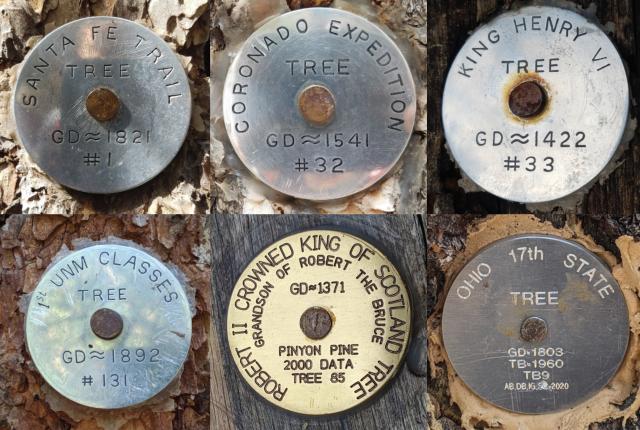IF YOU KNOW WHERE TO LOOK, there’s history sprinkled along the trails of the Sandía Mountains. Dollar-coin-size medallions, tacked to the trunks of trees, mark an ecological timeline that roughly ties each tree’s germination date to a historical event. Medallions commemorate the construction of the Brooklyn Bridge, in 1883; Henry VI becoming king of England, in 1422; the Pueblo Revolt of 1680; and Thomas Jefferson becoming president, in 1801. Roughly 85 of the medallion trees have been identified, but exactly who is responsible for marking them remains unclear. “We think the Civilian Conservation Corps workers might have been a little bored and started this whole process in the 1930s,” says Carl Gervais, a coordinator for the Albuquerque Senior Centers’ Hiking Groups, who has spent about five years mapping the trees. “But it’s a mystery as to who actually put them up.” Whoever installed them had the patience to find large trees in the Sandías, drill core samples, count the rings, make the brass or aluminum medallions, and then mount them over the holes. The oldest? The Robert II Crowned King of Scotland tree dates to 1371. The youngest, marking Alaska becoming the 49th state, sprouted in 1959. While more than 25 medallion trees can be found along the Faulty Trail, many others are much harder to find. “You will get lots of scratches,” Gervais says. “Wear long pants and a long-sleeved shirt.”
GPS coordinates for the known Medallion Trees in the Sandía Mountains can be downloaded at nmmag.us/medallions.


